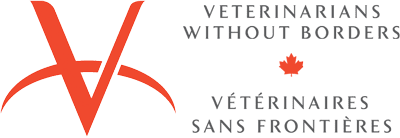With Christmas and New Year festivities something of the past, we finally got things organized and headed out in the field to start our first disease sampling project. So here’s the story, with a bunch of pictures- I owe you guys a good posting!
Last Saturday night, we headed out on the ferry to Corral across the mouth of a huge river to the other side, where there is a small town with an old fort where they used to protect the access to Valdivia from invading Spaniards.


We asked people about their type of animal husbandry, perceptions about animals in general, and then did a physical exam on each dog, and took blood from all owned dogs and cats we could get our hands on.
The point of this first step is to try to understand why people here do the things they do...and what if anything might change their behaviours toward their dogs. For example, most people don´t believe that dogs feel pain, so when their dogs are too old to work, or if they do something that they don´t like, they “get rid” of them.... They also kill all the female puppies as a form of population control. So- lots to do, but having said that, it comes down more to an animal welfare issue than an overpopulation issue, because out of the 70 dogs that we sampled, there were only 3 females!
The second day we wanted to get to Cadillal Alto which is a small community up the river from Chaihuin, to see if there was a difference between what we saw and learned in Chaihuin and the outlying areas which have fewer people, much less money, and more dogs. It was quite the adventure- accessible only by boat, we packed our kits and newly purchased supplies (thanks to Prevost Veterinary Clinic donations!!!) into the boat and headed off among a buzz of millions of enormous black and orange flies! But what a spectacular view!
We spent all day walking from one house to the other in the blinding heat. The people were so nice, pretty poor compared to what we’re used to in Canada- but really friendly and accommodating.


There is no access there to vets or doctors for the local people...nothing. Anyway, we found the dogs extremely skinny, worked really hard with their owners and only fed every few days (wheat skins and milk whey)...so needless to say these dogs have a huge impact on wildlife in the area because they have to hunt to feed themselves. These dogs were semi-wild; it was a huge adventure trying to restrain dogs long enough to take a sample, and there were a few rodeos- but generally we got the short end of the stick with the dogs high-tailing it off into the horizon and us stunned and covered in dirt, sweat, and assorted canine body fluids…
Some of them were really gentle and sweet though….

From the blood taken from all these dogs, we will be looking at the prevalence of distemper and parvovirus to see what the disease risk is for some of the native fauna such as the fox, otter and wild cats. So our next step is education. We will be heading out again in March to start an education campaign based on what we learned this time around, and we will also be vaccinating if the disease test results prove that it is indeed a risk there. Education is really the key though, and we will be working with teachers to implement something into the school system.
Anyway, that´s it in a nutshell. We had a great time. Guillermo got an enormous cat bite on his finger, we got stuck once and ripped off the front bumper, but despite that, we headed home exhausted but happy.









